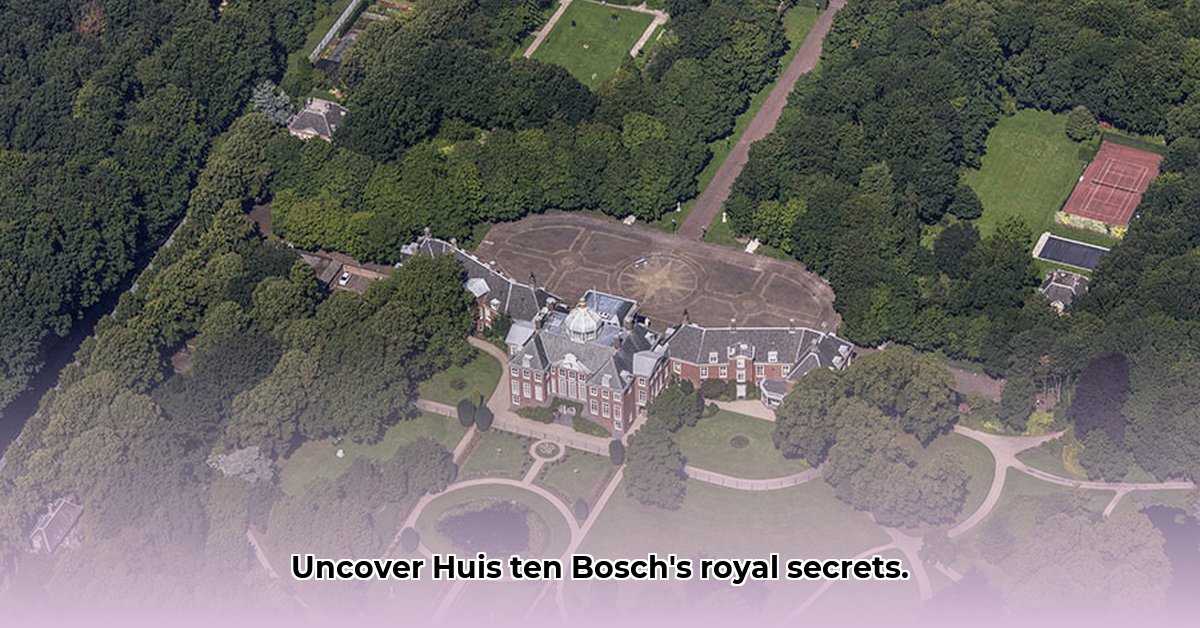
Waar Is Huis Ten Bosch? Unlocking the Secrets of a Royal Residence
"Waar is Huis ten Bosch?" you might ask. This isn't just any building; it's a magnificent palace near The Hague, a place steeped in history, a silent witness to centuries of Dutch royalty. Forget dusty museums – imagine a grand home where centuries of drama, romance, and political intrigue unfolded. Its story begins, surprisingly, as a modest summer retreat.
From Humble Beginnings to Royal Splendor
Picture the mid-1600s. Prince Frederik Hendrik, a powerful figure in Dutch history, and his formidable wife, Amalia van Solms, sought a tranquil escape from court life. They commissioned a relatively modest summer house, designed in the elegant simplicity of Dutch Classicism. The brilliant architect Pieter Post likely envisioned a serene family haven, a far cry from the majestic palace we know today. This wasn't mere whimsy; it reflected a calculated balance between private life and royal image. But this quiet refuge wouldn't remain so for long. How did this modest retreat evolve into the symbol of Dutch national pride we see today? The answer lies in the ambition and vision of future generations.
Generations later, Prince Willem IV, a man with a penchant for grandeur, oversaw extensive renovations. He commissioned the renowned architect Daniel Marot, whose opulent style transformed the summer home into a palace of breathtaking splendour. Lavish ornamentation replaced understated elegance, mirroring the rise of Dutch power and influence on the world stage. This wasn't merely an architectural shift; it reflected a changing national identity. It's a fascinating interplay of personal preference and national aspiration. Did you know, for instance, that the sheer scale of the renovations reflects the growing confidence of the Dutch Republic?
Imagine wandering through the palace, sensing the shift from room to room, witnessing the architectural evolution, the subtle change in mood from reflective tranquility to majestic power. It's a physical manifestation of a nation's evolving self-perception.
The Oranjezaal: A Painted Narrative of Power
The Oranjezaal (Orange Hall) is the palace's undisputed masterpiece. This isn't just a room; it's a colossal canvas depicting the life of Prince Frederik Hendrik, a visual biography showcasing the splendour of the Dutch Golden Age. Every brushstroke tells a story, a testament to the artistry and ambition of the era. To stand within its walls is to be transported back in time, surrounded by the echoes of past glories. What better way to understand a nation's history than through its artistic expression? This hall truly offers one of the most remarkable visual chronicles of a national identity.
Huis ten Bosch: A Mirror to Dutch History
Huis ten Bosch’s evolution is more than a building project; it’s a microcosm of Dutch history itself. It reflects the nation's political shifts and the evolving relationship between the monarchy and its people. From a tranquil retreat, it became a vital centre for state affairs, hosting diplomatic meetings and royal ceremonies. It remains a living testament to the enduring legacy of the Dutch monarchy, showcasing both its triumphs and its challenges. The palace's enduring relevance lies in its ability to adapt, while still serving as a potent symbol of continuity.
Huis ten Bosch Today: A Living Palace
"Waar is Huis ten Bosch?" It stands today as the official residence of the Dutch King and Queen. Remarkably, it remains a functioning royal home, seamlessly blending personal and public life. This adaptability is a testament to the palace's enduring relevance in the modern world. It’s a living, breathing testament to history, a bridge between the past and the present. This impressive residence offers a unique insight into the very heart of Dutch royalty.
This journey through Huis ten Bosch reveals much more than just bricks and mortar. It’s a story of evolving national identity, ambitious renovations, and the enduring appeal of a palace that has witnessed centuries unfold within its walls. So, when you wonder, "Waar is Huis ten Bosch?", remember it's more than a location; it is a living history lesson waiting to be explored. It's a palace that whispers tales of power, ambition, and the enduring legacy of Dutch royalty – a place where history genuinely comes alive.